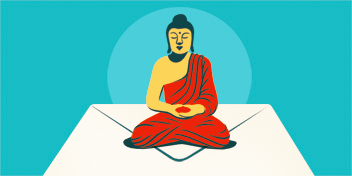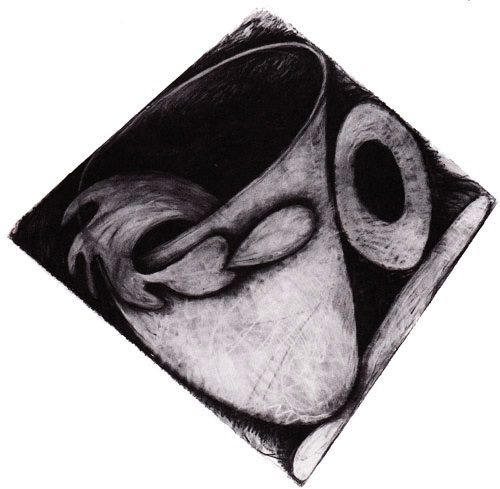Buddhism after patriarchy calls for a radical reassessment of the relationship between spirituality and so-called “everyday life.” Like many other male-dominated religions, Buddhism has often demonstrated little interest in “ordinary” life, at least the ordinary life of the householder. Now maintaining one’s livelihood and taking care of one’s environment and family need to be accepted as an alternative that is not inferior to monasticism. The tasks of the householder must come to be seen as arenas in which mindfulness and detachment can be practiced. Furthermore, householder and monastic paths need to be seen not as choices in stark opposition, but as alternating modes of life that can enrich and inform one another.
Some religions, particularly those with no monastic tradition, have explored in depth how to infuse everyday life with spiritual significance. In these contexts, renunciation is not the recommended method; instead, sacred living is attained by contemplation of the world. Classical Judaism, with its minute and intimate code for domestic living, provides an example. From getting up and dressing, to cooking food and eating, to retiring again at night, there is a continual effort to infuse daily experience with sacred awareness. Every seven days, this intensifies in the celebration of the Sabbath. There are no centers or monasteries—either for temporary or permanent retreat—but the tradition purports no need to alter the daily routine for the sake of spiritual awareness. Each precisely delineated ritual behavior is accompanied by an intention (kavvanah) reminds the person keeping the commandment each act is to be done now. If the intention is remembered or understood, the act becomes hollow.
Native American groups cultivate a similar encompassing awareness of the spiritual dimension of ordinary activities. For example, Lame Deer, a member of the Oglala Lakota People, explains the message of a pot of boiling soup to the white outsider:
But I’m an Indian. I think about ordinary, common things like this pot. The bubbling water comes from the raincloud. It represents the sky. The fire comes from the sun which warms us all—men, animals, trees. The meat stands for the four-legged creatures, our animal brothers, who gave of themselves so that we should live. The steam is living breath. It was water; now it goes to the sky, becomes a cloud again. These things are sacred…. We Sioux spend a lot of time thinking about everyday things, which in our mind are mixed up with the spiritual. We see in the world around us many symbols that teach us the meaning of life.
Buddhist texts are more likely to declare that ordinary household life is spiritually counterproductive. According to one early text: “The household is a confined and dusty path; wandering forth is open air. It is not easy for a householder to practice the religious life, completely pure and fulfilled in entirety and polished like mother-of-pearl. Then let me cut my hair and beard, put on the yellow robes and wander forth from home to homelessness.” And Buddhism’s historical dichotomy between monastics and lay people has afforded it certain strengths. Traditions have been maintained with great vigor and authenticity by a core of dedicated practitioners. And, unburdened by household responsibilities, monks were free to carry Buddhism across cultural frontiers.
In contemporary Buddhism, both in North America and in Asia, the monastic model is being challenged by serious lay practice and study. The usual pattern involves short but disciplined regular periods of study and practice interspersed with periods of full-time “retreat” during which normal patterns of household life are set aside.
The development of serious lay practice, however, does not necessarily mean that activities traditionally held in low esteem are now accorded value. For the time being, it means only that lay people now attempt to make time for practices usually engaged in only by monastics, and that their efforts are encouraged. However, if this shift continues, a transformation of values is inevitable, and everyday life, career, and family will come to be regarded as Buddhist practice. Such restructuring would challenge the traditional hierarchy between the spiritual and the ordinary: housework vs. meditation, business vs. study, childcare vs. retreat, marriage vs. celibacy—all the dichotomies and hierarchies that once seemed so clear thus vanish. Yet while this change in perspective may enlarge the canon of Buddhist concerns, it introduces new tensions as well.
From a Buddhist view, a person practicing the kind of rituals recommended by Judaism, for example might still be attached to the very objects and ties that are the basis for sacred awareness midst of daily life. And as long as there is attachment there is no true freedom. Furthermore, one can easily mistake the feelings that may accompany ritual or religious experience for detachment, insight, and release. Ordinary life is too seductive, the Buddhist might say, it is safer, surer, and more productive of true freedom to replace ordinary life with a monastic simplicity that reduces the opportunities for attachments to form.
Yet one can become attached to anything, including the routines of monastic life or the status it affords. Clearly, the attachment is what must be overcome; attachment itself then, rather than any object in particular, is the problem.
Buddhism does possess the conceptual resources to embrace the view that the ordinary world, ordinary things, and everyday experiences can be apprehended with mindfulness, awareness, and detachment.
The earliest model for this pursuit of clarity in the midst of daily life occurs in the Therigatha (poems of early Buddhist nuns). The commentary tells the life story of a nun who first became a lay disciple. After hearing Prajapati (the Buddha’s stepmother who later became his disciple) speak, she desired to leave the world but her husband would not consent:
So she went on performing her duties, reflecting on the sweetness of the doctrine, and living devoted to insight. Then one day in the kitchen, while the curry was cooking, a mighty flame of fire shot up, and burnt all the food with much crackling. Watching it made it a basis for meditation on the utter impermanence of all things. Thereby she was established in the Fruition of the Path of No-Return.
When she refused to wear jewels after this experience, her husband finally relented and let her become a nun. While her story illustrates the possibilities of practicing mindfulness in household life, it ends by portraying the monastic path as superior.
Serious conflicts can accompany an attempt to combine the monastic and householder roles. “We often talk about practice and everyday life as opposites,” explained one practitioner. “We feel zazen is ‘pure’ practice, while work or everyday life is ‘applied’ practice. And in both spiritual and scientific circles the ‘pure’ activity is more prestigious than the applied side of it.” These conflicts are poignantly articulated by parents—women, for the most part—who were committed to formal lay Buddhist meditation practice before they had children.
People in this situation also often experience guilt over “not practicing” and “not being serious about Buddhism.” Though the example is most dramatic for childrearing, it is important to remember that these same conflicts can arise regarding a broad range of “ordinary” domestic and work-related concerns of both women and men.

The situation obviously invites feminist reconceptualization, but the task is trickier and more subtle than it may first appear. The standard feminist critiques of other patriarchal, male-dominated religions apply to Buddhism as well: Buddhism offers little in the way of advice relevant to women’s life cycles, bodies, or reproductive experiences. These topics are rarely discussed in classic sources and if they are the discussion is remote. Because of this paucity of traditional resources, practitioners—especially women—feel that it is useless to ask Buddhist authorities for guidance. One would do better to ask one’s grandmother and to trust oneself. In the view of one frustrated mother: “I am personally reluctant to open this matter to patriarchal advice. What would Dogen Zenji, who never married, never had a child, never had a ‘job,’ possibly know about the difficulties that come with these situations?”
That childcare has never been revalorized, in Buddhist terms, from the parents’ point of view, is somewhat embarrassing when we contrast it with the fate of many stereotypically male activities over the years. In Zen Buddhism, daily physical work has become a critical part of meditation training. Gardening, building, and maintaining the monastery, are all done with precise mindfulness and are regarded as central to overall training. (There are in addition to cooking and cleaning—typically feminine tasks—which have long been used as opportunities for mindfulness.) Notoriously, Zen Buddhism even lent its hand to disciplining warriors in Japan, providing them with meditation training to enhance their skills. Tibetan monasteries also had military components in some cases. If the stereotypically male pursuits of agriculture and militarism, two activities strictly forbidden in the vinaya (rules of monastic discipline) can be revalorized, one wonders why childrearing has not been. The answer, of course, is that few childrearers (usually mothers) had the opportunity to become Buddhist teachers. Further, early Indian Buddhists disparaged sexuality, and it too has since been championed by Vajrayana Buddhism both as symbol and experience. Only those activities specific to—and often central to—women’s lives have been left out.
While historically Buddhism has stressed the differences between monastics and householders, perhaps the two are not so different. Monastics by no means spend all their time in study and meditation. They clean their quarters, wash dishes, mend their robes, and keep records. In some monastic contexts, they also cook, and work on the grounds and in the garden. In short, they engage in all sorts of mundane activities. In the case of the monastic, these activities affirm mindfulness and awareness; in the case of the householder, they are invitations to mindlessness and distraction. But in a reassessment that regards both domestic life and monastic life as potentially the realm of spiritual discipline and sacred outlook, these assumptions do not hold. As Fran Tribe (a Zen practitioner) has written: “We think that a monk working in the temple garden is practicing, but it is harder to see that a lay person taking care of his or her own garden may be practicing, too.” The issue is not whether one is in a monastery or a meditation hall, doing formal meditation practice, or in an office or a nursery, doing “applied” meditation practice. The feminist reconceptualization calls for seeing “ordinary” activities as sacred—and spiritually significant.
Although this feminist view certainly has compelling merit, some care and caution are required in its endorsement. Buddhism traditionally has been suspicious of worldly life for good reason. Often and easily, it becomes petty, trivial, and indulgent. Even people who take care to live contemplative lives in the midst of activity often feel that they have become distracted and caught up in trivial or indulgent reactions and pursuits. The point is not that ordinary activities are necessarily sacred, but that that they can be sacred when done with the proper mental and spiritual attitude. The corresponding, equally significant, point is that one can easily lose that mind of clarity, awareness, and mindfulness.
To see the sacred in ordinary activities is often considered to be the acme of spiritual attainment, of true freedom. It is not attained overnight or without significant spiritual practice, simply by declaring its desirability. On the one hand, it is appealing to see spiritual concerns and worldly concerns, as interpenetrating and indistinguishable. On the other is easy, while attempting to unify one’s life, to fall into the snares of samsara.
Two questions might occur to an outsider. First, why is it important to maintain clarity? Without clarity and insight, one will fall into attachment and ignorance, which inevitably bring suffering in their wake. Second, is it any easier to maintain awareness and detachment in a monastic setting than in a household environment? The answer is an unqualified “Yes,” based on the experience of many during periods of retreat into quasi-monastic environments for intensive study and meditation. All-pervasive discipline, a strict schedule, lack of interruptions, and focused attention to meditation practice, all conspire to enhance clarity, insight, and awareness.
We have no models, however, for a balanced way of life, in which all parts are valued as important to overall spiritual well-being. To create these models is one of the tasks of post-patriarchal Buddhism. I suggest “balancing on the razor’s edge”—that familiar Buddhist metaphor for the life of spiritual discipline is particularly apt. While affirming the potential of householder concerns, one must also hold firmly to the Buddhist dissatisfaction with conventional attitudes and approaches. To maintain this balance, to maintain both the feminist sense of the potential sacredness of everyday work and the Buddhist call for detachment and equanimity, ongoing meditative discipline is necessary. That ongoing attitude of awareness will itself be the protection we need to keep us in balance on the razor’s edge.
Thank you for subscribing to Tricycle! As a nonprofit, we depend on readers like you to keep Buddhist teachings and practices widely available.

